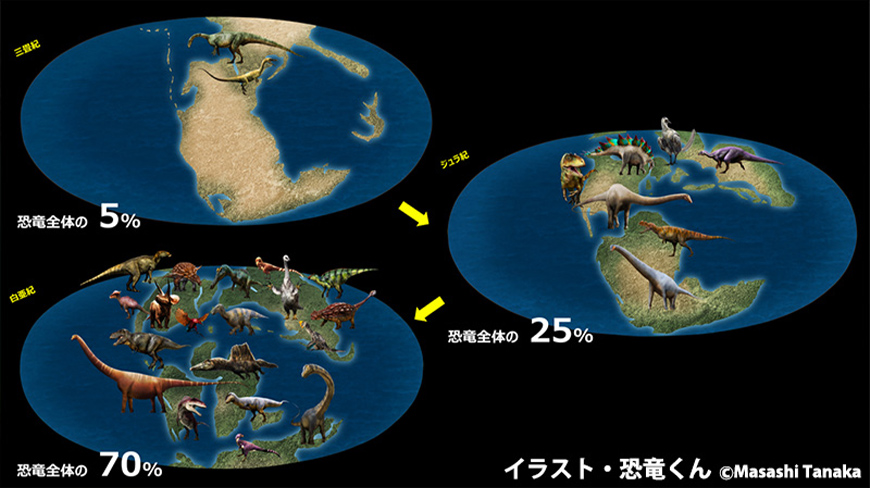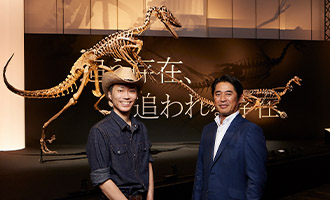December 2023
Sustainability NowLooking to the Future by Delving into Our Past
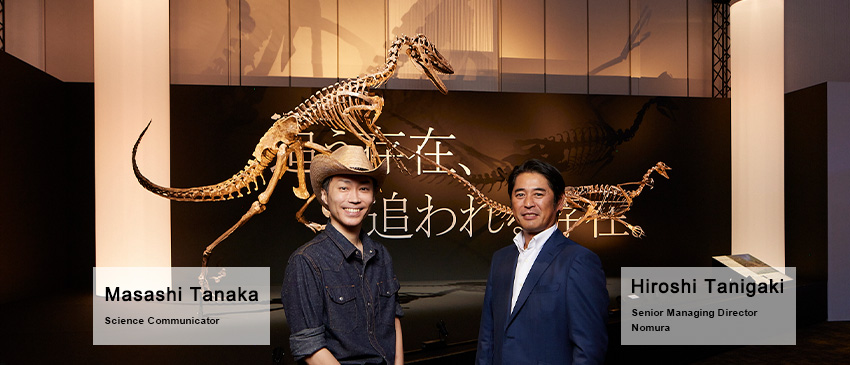
Dinosaurs capture the imagination of young children and for many of us they bring back fond childhood memories. They roamed the Earth for 165 million years, dominating the world they lived in. Despite their long reign, they couldn't escape the environmental devastation triggered by a giant asteroid strike and now all we have are their remains.
Nomura Senior Managing Director and Global Co-Head of Corporate Communications Hiroshi Tanigaki sat down with Science Communicator Masashi Tanaka to discuss the connection between dinosaurs of the past and today's sustainable development goals.
Career Planning at Eight
Tanigaki: Tanaka-san, you curated the Dino Science 2023 exhibition, placing the spotlight on the Laramidia continent (currently western North America) in the Late Cretaceous Period. It was a big hit with children. Why did you want to study dinosaurs?
Tanaka: I've loved animals since I was very young and I often visited the Ueno Zoo in Tokyo. One rainy day I ended up going to the National Museum of Nature and Science next to the zoo. There was a huge dinosaur in the hallway near the entrance of the museum. I can still remember the shock I felt seeing a creature that was larger and looked different than any animal I had ever known.
I became obsessed with dinosaurs and my parents encouraged my interest. They bought picture books and toys and took me to museums all over Japan. My father was a bit different. When I was about six or seven, he bought me thick technical books and English and German books. My parents say that when I was eight I told them I wanted to research dinosaurs in Alberta, Canada. But I don't remember saying that.
Tanigaki: And you did go to Canada to do dinosaur research just as you said you would.
Tanaka: There's a UNESCO World Heritage site in Alberta called the Dinosaur Provincial Park, which is known for being the richest dinosaur fossil site in the world with the largest variety of dinosaurs. Thanks to this environment, the University of Alberta is the world-leader in dinosaur research. I wanted to become a dinosaur scholar and studied paleontology there. However, at some point, my desire changed from wanting to do my own research to wanting to leave something behind for children. I also realized that this suits me better, so I came back to Japan to do the work I am doing now.
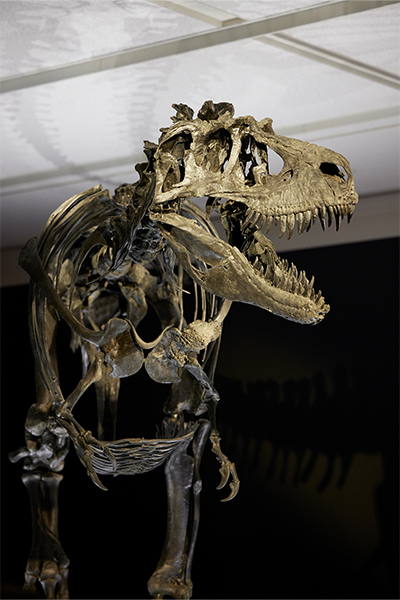
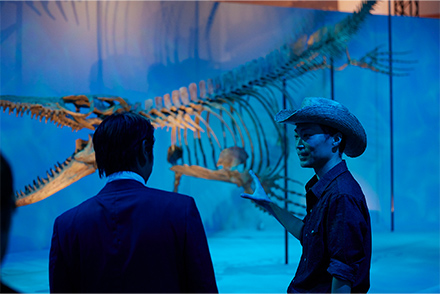
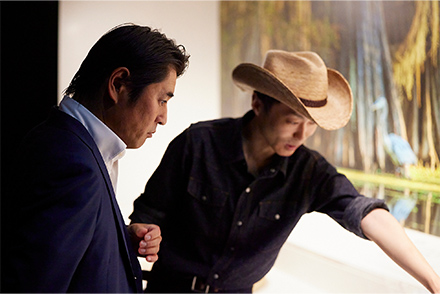
Jurassic Park Propels Dinosaur Research
Tanigaki: More than 40 years ago when I was a child, I also saw fossils at a museum. In those days when we thought of dinosaurs, Tyrannosaurus, Triceratops and Stegosaurus came to mind. There must be many more types of dinosaurs now.
Tanaka: Yes, there are. The picture book I had as a child mentioned 300-400 species, but there are currently around 1,200 species of dinosaurs. The pace of discovery is constantly increasing with 30-50 new species announced every year in the past 20 or so years. The movie Jurassic Park inspired the Jurassic Park generation, many of whom are dinosaur scholars currently in their thirties and forties. We are seeing a lot of advancement in dinosaur research.
Tanigaki: It will be interesting to see what new species will be discovered in the future. Dinosaur fossils have been found in Fukui, Japan. How is Japan as a fossil producing area?
Tanaka: Generally speaking, Japan is not conducive to fossil preservation. In countries like Canada that are rich in dinosaur fossils, geological strata can stay the same for around 100 million years, but in Japan where there are many earthquakes and volcanoes, the strata have been worn down. While Japan's rich vegetation is good for the environment, the plant roots destroy what's in the ground, and vegetation also covers the land surface making it difficult to find fossils even if they are there. In addition to Canada and the US, Mongolia and China are also major fossil producing areas so it is believed that Asia itself was a dinosaur paradise.
Thriving in Hyperwarming Climate
Tanigaki: Dinosaurs emerged about 230 million years ago and thrived for approximately 165 million years. Interestingly, dinosaur species increased from one period to the next, moving from five percent in the Triassic Period to 25 percent in the Jurassic Period and 70 percent in the Cretaceous Period.
©Masashi Tanaka
Tanaka: In the Triassic Period, there was a single continent called Pangea, whose interior was a very dry desert. In the Jurassic Period, the continent started to shift and became separated by sea. As a result, green areas increased. The dinosaurs prospered as the environment improved and by the Cretaceous Period when the continents were further separated, dinosaurs were born in different areas and quickly diversified.
Tanigaki: You said that in the Cretaceous Period, large swathes of the Earth were covered by sea. Did this happen as the continents shifted around?
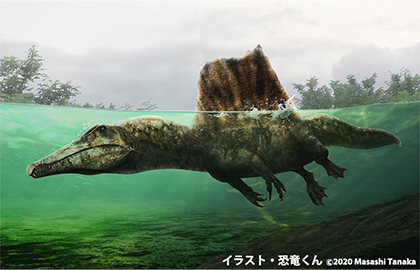
Spinosaurus inhabited Africa in the Late Cretaceous Period and is believed to have been well adapted to aquatic life
©Masashi Tanaka
Tanaka:
This was a period of hyperwarming when there was no ice whatsoever in the North or South Pole. Australia, Africa, parts of North America, Europe and most of Japan were under water during this time. There is only a certain amount of elements of matter on Earth, so even if the water changes form there is no significant change in this amount.
Therefore, when the temperatures fell later on, ice formed in the North and South Poles again and the seawater receded.
Temperatures were high in the Cretaceous Period, giving rise to frequent hurricanes, typhoons and volcanoes. Dinosaurs were most diverse during this period. The Earth's environment is constantly changing but the pace of change then was very slow compared to modern day warming. As such, the animals were able to adapt to these changes.
Environmental Destruction Leads to Extinction
Tanigaki: Dinosaurs survived for a long time in what seems like a harsh environment. How did they become extinct?
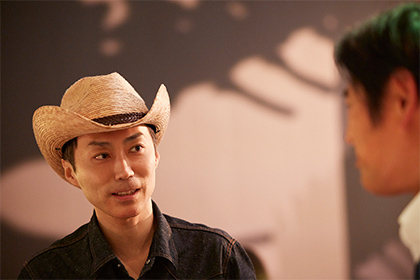
Tanaka:
While it is believed that multiple factors contributed to dinosaur extinction, the most decisive factor was a giant asteroid, believed by scientists to have been a small planet. Based on detailed analyses, we know that about 66 million years ago, an asteroid about 10-15 km wide struck the Yucatan Peninsula at a 30-degree angle at 20km per second.
The crater formed by this collision was 180-200 kilometers wide, triggering a mega earthquake of 11-12 in magnitude and a more than 300-meter-high tsunami.
Tanigaki: That's 1 billion times more powerful than the atomic bomb in Hiroshima.
Tanaka: Yes. However, the collision of the asteroid alone would not have caused such a large impact on the other side of the world. The biggest problem was that the asteroid exploded, releasing large quantities of dust into the atmosphere and this led to the rapid destruction of the global environment. As a result, the ecosystem fell apart and 75 percent of living creatures were made extinct. Even though dinosaurs appear to be large and strong, this does not mean that they can survive in any environment. Animals require a certain environment to live.
Tanigaki: Dinosaurs are extinct now but I wonder if a similar type of animal might emerge. Will we see dinosaurs again?
Tanaka: Since the extinction of dinosaurs and many reptiles, animal vertebrates are mainly mammals and birds, which are descendants of dinosaurs. When there is a space in the ecosystem, something tends to fill that void. While I cannot say for certain if similar creatures will emerge, dinosaurs are extinct and will not return. The fact that they are extinct means that the environment necessary for their survival has been lost. Even if we were able to bring them back, it would be pointless without the right environment.
Benefits of Looking Large
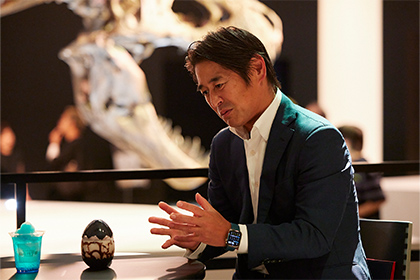
Tanigaki:
So it's important for us to remember that once a creature is extinct, it means it is gone forever.
When I think of the future I tend to think in terms of 100 years from now, but when it comes to dinosaurs we are talking about a much longer span of time.
Tanaka: When dinosaur researchers speak with other curators, our idea of time and distance is very different. Tyrannosaurus and Triceratops are the most recent dinosaurs but they existed 66 million years ago. We also don't know precisely when the asteroid strike happened. There could be as much as a 300,000-year margin of error.
Tanigaki: A 300,000year margin of error?
Tanaka: Human history, as a purely "biological species" prior to the development of civilization, goes back less than 200,000 years, a mere fraction of Earth's history. It is not unusual for millions of the Earth's layers to erode, so it is possible that one million years from now there will be no trace of human existence. Does this mean there is no problem with human activities? Climate change that should take a million to two million years to occur is currently happening in one hundred to two hundred years.
Tanigaki: If warming continues at the current pace, will we have the same environment as the Cretaceous Period?
Tanaka: The Cretaceous period was in some ways a simulation of the future. If we look at the Earth in cycles of hundreds of millions of years, the impact of global warming is not very obvious.
So rather than teaching us direct lessons, what dinosaurs do is give us an objective view of human activities on the large scale of Earth's history. As humans, we have to return to a place of humility and realize that we are just one part of the ecosystem.
At the same time, the fact that we have been able to understand things from the distant past in the few hundred years since human civilization developed is cause for hope. It means that if human beings put effort into positive things, we have the ability to achieve great things. This potential is in all of us. So instead of saying we can't do anything regarding the environment, I believe we have the power to change the future. This is what dinosaurs and science teach us.
Changing the Way People View the World
Tanigaki: We were delighted to have you as guest speaker at our summer kids event this year, which we have for our employees' children each year. Thank you for teaching the children what we can learn about the environment from dinosaurs. The children had fun while learning, you took the time to respond to their questions and both adults and children alike put our heads together to answer the dinosaur quiz. What are your future dreams and goals Mr. Dinosaur, as you are called?

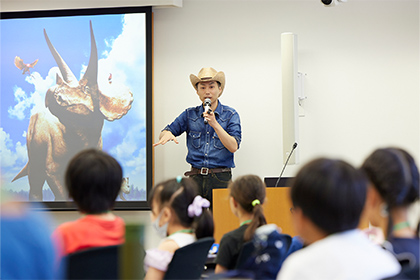
Tanaka: Although I call myself Mr. Dinosaur, I have no desire to become famous or influential.
Tanigaki: What about discovering a new species of dinosaur and naming it?
Tanaka: Not at all. Perhaps becoming a scholar wasn't for me after all.
Tanigaki: Through your current work, you want to teach kids about the possibilities that are out there.
Tanaka: My target is mainly children but I hope that parents who accompany their children or people I meet through my work will see the world a bit differently after attending one of my events. That's what makes discovery interesting. For instance, someone who hears that birds are descendants of dinosaurs for the first time may start looking at the pigeons or crows they see around town differently. Or the sunny side up egg they eat for breakfast. The world is full of interesting things. But in the times that we live in we have fewer opportunities to see the fun in exploring and discovering the unknown.
Tanigaki: So even a small "discovery" can dramatically change how we see things.
Tanaka: I think the happiest way to live life is to take full advantage of the unique attributes we have as humans-our intellect, and our ability to share and learn-and to bask in the fun that this brings. Dinosaurs broadened my world and opened me up to many new things. I hope that many people will find that, and I would be happy if I can help create opportunities for such discoveries.
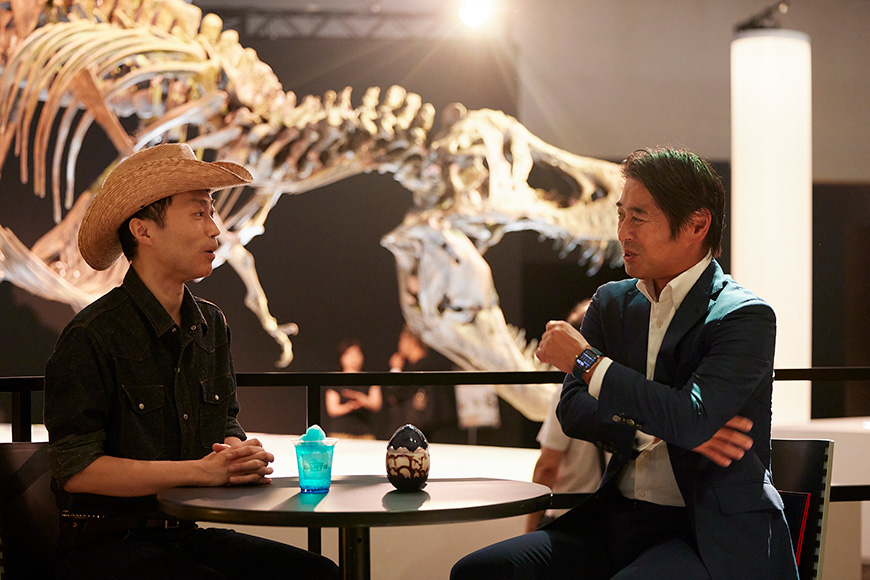
Masashi Tanaka fell in love with dinosaurs at the age of six when he visited the National Museum of Nature and Science in Ueno, Tokyo and saw a full dinosaur skeleton for the first time. In high school, he went to study in Canada and later studied paleontology at the University of Alberta, a hub for dinosaur research. In addition to curating dinosaur exhibitions across Japan, he gives talks, creates illustrations, writes and appears in the media. He also actively collaborates with research institutes in North America.
Interview conducted with the co-operation of DinoScience Production Committee 2023
DinoScience Exhibition 2023
Organizers: TOKYO MX|Co-organizers : Landmark Entertainment, Ltd., Tokyo FM, Frontage Inc., Let's Marketing, Co., Ltd.
Photography: Kaoru Yamada
